ERP Future Trends Every Business Should Watch in 2025
ERP is no longer just accounting and inventory software. It is the digital backbone of an entire company. By connecting finance, supply chain, HR, sales, customer data, and analytics into a single platform, ERP systems provide centralized control and operational intelligence.
With technology and business expectations both changing rapidly, 2025 will be a pivotal year for ERP.
While all the talk is about cloud ERP, ERP on mobile, and AI and ERP, these are just the surface changes.
Deep under the covers of ERP software, the trends in ERP architecture, usage, and value are much bigger. These ERP future trends for 2025 are important to understand because businesses that are on top of them will have a competitive edge, avoid expensive pitfalls, and leverage opportunities.
AI and ERP: From Automation to Intelligence
ERP automation using AI has already begun. In 2025, ERP and AI are moving past automation to actually providing recommendations for decision-making. Instead of waiting for someone to request a report and then running the report, ERP in 2025 will advise action based on the same data.
For example, in retail ERP, an artificial intelligence function might detect the fact that winter jackets sell more quickly in the Northeast region of the United States every November. That ERP system might not only flag the need for a restock in November but also suggest stocking extra quantities a few weeks earlier in those regions.
In manufacturing ERP, AI might not only predict when a machine will break down but also estimate the financial impact of the lost production and recommend alternatives, such as whether to contract a third party.
AI is able to predict and advise because most businesses are unaware that ERP is now “self-learning.” As more financial transactions and operations are processed through ERP, the intelligence is learning and recognizing business-specific patterns.
This means that no two ERP systems using the same software will actually be the same over time; they will be intelligent in different ways because they have learned from their respective business data.
Cloud ERP Will Mature Into Multi-Cloud
Cloud ERP is mainstream, but the much less obvious shift in cloud ERP is multi-cloud. Multi-cloud ERP is a strategy where workload, and therefore company information, is not siloed in one vendor’s cloud.
Instead, most of the data is kept in one cloud, but the ERP platform can switch where that data goes (and when it is backed up) in case the primary cloud provider has an outage or goes out of business.
Cloud-native ERP is the other big shift in 2025. Traditionally, even cloud ERP systems had to be upgraded “en masse” when a new version was released. This could take several months and cause major workflow disruptions. In 2025, the modular cloud-native architecture of ERP will mean upgrading a single module (say, supply chain ERP, or human resources) and not the entire system.
ERP on Mobile Will Do More Than Approvals
Mobile ERP already exists, but in 2025, these systems will do more than approve purchase orders or show graphical dashboards on smartphones. Mobile ERP is going to be all-purpose operating tools for each and every employee who is “in the field.”
In the warehouse, that might mean scanning barcodes and running quality checks using a mobile app. For truck drivers, it could mean updating delivery logs on-the-go so that ERP shows live progress.
Warehouse managers might even be able to run predictive analytic queries via mobile ERP tools without having to sit at a laptop.
A final change is “offline” ERP. This has become necessary in many industries like construction, mining, and rural logistics where the workforce is not always connected to the internet. Offline ERP lets people collect data on an app while they are in the field and sync automatically to ERP when an internet connection is available.
Industry-Specific ERP Will Replace Generic ERP
Most companies have dealt with generic ERP. This has often resulted in ERP-induced headaches, and customer support calls, because generic ERP requires companies to fit the business processes to the software.
The solution to this ERP pain is a new crop of industry-specific ERP. These platforms are based on generic ERP software but come with industry-specific pre-built templates and compliance-based frameworks.
For example, most food industry ERP now has built-in expiration tracking, automated quality checks, and health-safety ERP compliance. Construction ERP is now adding financial forecasting based on project lifecycle management and contractor-specific ERP dashboards. Healthcare ERP is now offering secure patient data ERP integrations as well as aligning to privacy compliance standards.
By doing this, industry-specific ERP is cutting down the time and cost of ERP customization. In 2025, businesses will no longer have to wait months for a consultant to modify ERP; they will be able to start with industry-ready ERP solutions that already fit their requirements.
Low-Code ERP: Business Teams Taking Control
ERP customization has always been left to IT teams, but in 2025, business teams will also be able to “code” ERP without deep technical knowledge, using low-code ERP development tools and capabilities.
The most important aspect of this trend is agility. Business teams that want to do something like, for instance, track a new sales channel within ERP will be able to build the reporting workflow in just a few days instead of waiting for months for IT teams.
Another advantage of low-code ERP is breaking vendor lock-in. In the past, if an ERP system did not include a desired capability, businesses had to wait for the vendor to add it or go through a costly process of hiring an external consultant to modify their ERP code.
Low-code ERP gives businesses back control. They can adapt ERP systems themselves without waiting for the vendor.
ERP Security Will Become Non-Negotiable
With more sensitive financial, HR, and customer data going into ERP systems, it is a target for cyberattacks.
In 2025, ERP security will be beefed up to protect against these attacks. For instance, many ERP systems will embed AI-powered activity monitoring that can raise flags on unusual access, such as a warehouse employee trying to download every customer’s credit card data outside of work hours.
ERP vendors are also moving to a “zero-trust” model. In this security architecture, no user, device, or app is trusted by default, even if it is inside the business network. Authentication is continuous.
ERP is also providing more robust access controls so that one compromised user account cannot give attackers carte blanche access to the entire ERP system.
Businesses do not consider ERP cybersecurity risks, but even one data breach could bring down supplier contracts, employee payroll, or customer privacy.
IoT and ERP: The Hidden Advantage
IoT devices create massive amounts of data but on their own, this is useless information. Connecting IoT and ERP, however, turns this data into intelligence.
In transportation and logistics, for example, IoT sensors can be placed on delivery trucks that send real-time location, fuel usage, and cargo temperature information to ERP systems, which then automatically update delivery schedules.
In agriculture, ERP platforms connected with IoT soil sensors are helping farmers determine the optimal level of irrigation and fertilizer use to drive maximum crop yields.
The hidden advantage, however, is not real-time tracking. The biggest change for IoT and ERP in 2025 will be automated decision-making. ERP systems will be able to automatically re-route shipments, for example, or reschedule production without requiring human intervention and approval. This is why IoT and ERP are going to save businesses time and money.
ERP Will Help Track Sustainability
Customers and governments are demanding sustainability reporting, but many businesses are not aware of how to track it or get the data.
Enter ERP, which is embedding intelligence and ERP reports that measure carbon footprint, energy consumption, and waste generation into operational workflows.
For example, ERP can track how much energy each line of a factory floor uses and then advise shifting more production to times when renewable energy is more plentiful.
ERP can also track packaging and other waste across a supply chain, then suggest switching to eco-friendly materials or alternative delivery methods that reduce the company’s environmental impact.
ERP will help businesses with compliance, but it will also become a marketing weapon. In 2025, consumers are increasingly likely to buy from brands that can prove, with data, that they are pursuing sustainability goals.
ERP Will Finally Be Affordable for Small Businesses
Businesses assume ERP is only for large enterprises with hundreds of employees. Thanks to software subscription models, small businesses and mid-market enterprises can now afford ERP, but the fact is that ERP vendors will continue to roll out lighter versions of ERP software in 2025.
In particular, ERP will be more modular, meaning that businesses can start small, with just the required number of modules (say, inventory and finance). Over time, as the business needs change, companies can scale up the ERP solution by adding new modules.
The key benefit of this trend is that businesses do not have to make the huge up-front investment they have been afraid of in the past. With modern ERP systems being modular and available on a subscription model, this barrier to ERP adoption is being removed. ERP in 2025 will be affordable for all businesses.
Voice, Chat, and Natural Language ERP
ERP interfaces in the past have always been complex and required significant training. In 2025, ERP will also have natural language capabilities.
This means an employee will be able to ask a question such as, “show me the top three suppliers in terms of on-time delivery this quarter” and get an instant answer back.
The benefit is twofold. ERP training time is reduced, so employees who are not technology-savvy are not left behind. And ERP adoption rates improve dramatically because the ERP system itself now actively communicates with users.
Conclusion
The ERP future in 2025 is going to be dominated by ERP automation, multi-cloud flexibility, industry-specific design, mobile intelligence, and real-time information. If businesses prepare for this change, they will have the advantage.
FINAC ERP is future-ready ERP. Intelligent automation and decision-making, cloud-native and secure, available on mobile devices, and industry-focused, FINAC ERP is designed to provide businesses with an edge in 2025.
To position your business for growth and change in the future, now is the time to act. Contact FINAC and let us show you how our ERP software can help you prepare your business for 2025.

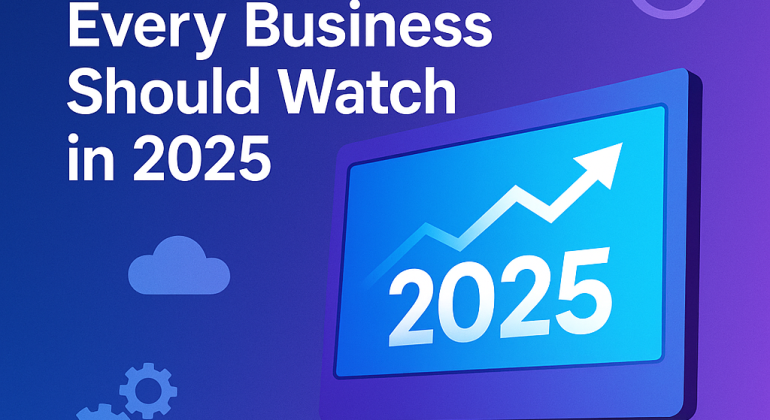
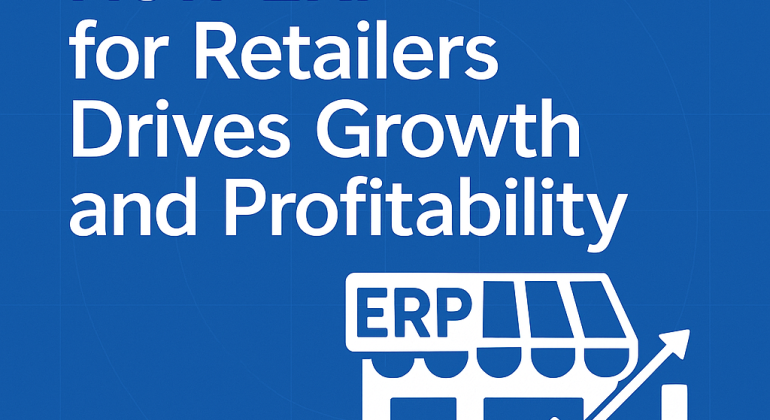
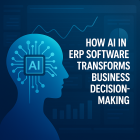
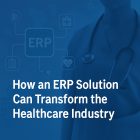

Recent Comments